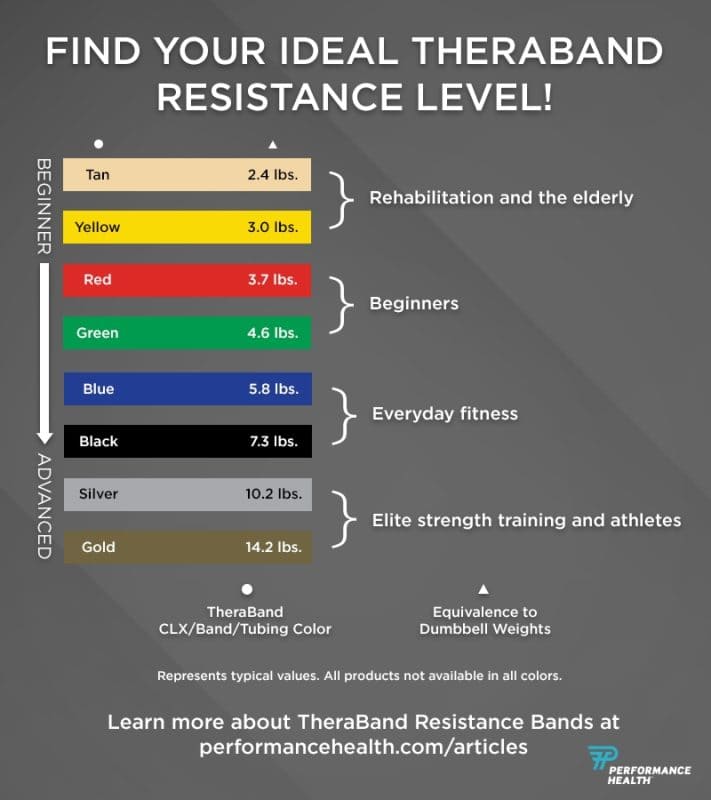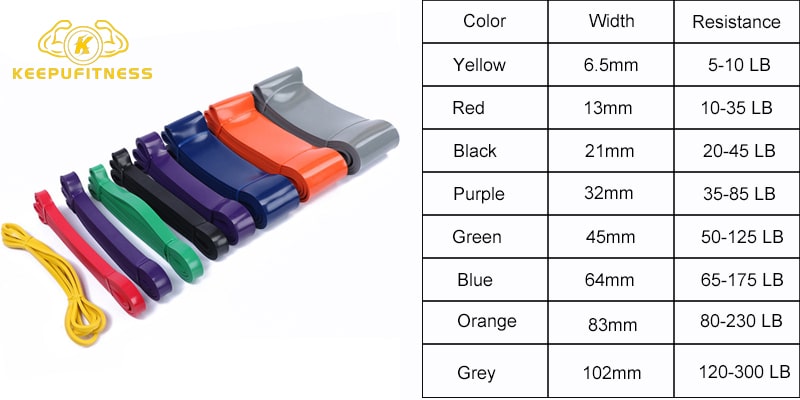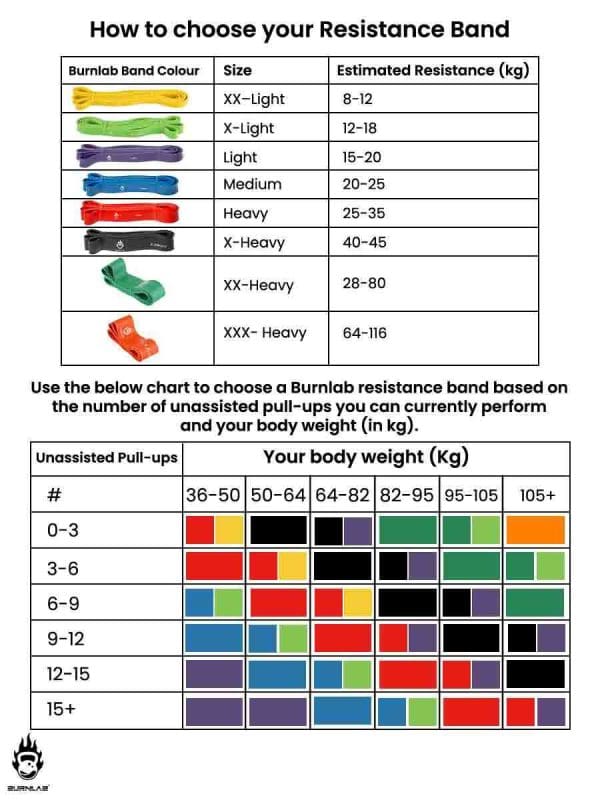resistance bands
How to Choose the Right Size Resistance Band
Are you looking to incorporate resistance bands into your workout routine but unsure of which size to choose? Worry not! In this article, you will discover simple yet effective tips on selecting the right size resistance band for your fitness needs. Whether you are a beginner or an experienced fitness enthusiast, this guide will provide you with the knowledge and insights to make an informed decision. So let’s dive in and find the perfect resistance band to help you achieve your fitness goals!

Factors to Consider
Your Fitness Level
When choosing the right size resistance band, your fitness level is an important factor to consider. Are you a beginner or someone with more advanced fitness experience? If you are just starting out, it is advisable to choose a band with lighter resistance to allow your muscles to adapt gradually. On the other hand, if you are more experienced and looking for a challenge, consider bands with higher resistance levels.
Your Goals
Another important factor to consider is your fitness goals. What do you hope to achieve by incorporating resistance bands into your workout routine? If you are focusing on building strength and muscle, you may want to opt for bands with higher resistance. However, if your goal is to improve flexibility or simply add a bit of resistance to your workouts, bands with lighter resistance may be more suitable.
Types of Exercises
The types of exercises you plan on performing with resistance bands should also inform your decision on the right size to choose. Different bands are designed for specific exercises, so it is important to choose one that aligns with your workout routine. For example, if you are primarily interested in lower body exercises such as squats or lunges, loop bands may be the most appropriate choice. Conversely, if you plan on incorporating upper body exercises like bicep curls or shoulder presses, tube bands may be more suitable.
Types of Resistance Bands
Loop Bands
Loop bands are small, circular bands that can be used for a variety of exercises. They are often used for lower body exercises such as glute bridges, squats, and lateral walks. Loop bands come in a range of resistance levels, making them suitable for different fitness levels and goals. They are a popular choice for those looking to improve their lower body strength and stability.
Tube Bands
Tube bands consist of a long, flexible tube with handles on each end. They can be used for various exercises targeting both the upper and lower body. Tube bands are known for their versatility and are often used for exercises such as bicep curls, tricep extensions, and rows. Like loop bands, tube bands come in different resistance levels to accommodate different fitness levels and goals.
Therapy Bands
Therapy bands, also known as flat bands, are wider and longer than loop or tube bands. They are typically used for rehabilitation exercises and physical therapy, as well as for general strength and conditioning training. Therapy bands are often color-coded to indicate different resistance levels. These bands offer a gentler resistance compared to loop or tube bands and are suitable for individuals who require a lower intensity workout.
Resistance Levels
Light Resistance
Resistance bands come in different levels of resistance, with light resistance being the lowest. Light resistance bands provide the least amount of tension and are suitable for beginners or those recovering from an injury. They can be used for exercises that require less strength, such as shoulder external rotations or glute activation exercises.
Medium Resistance
Medium resistance bands provide a moderate level of tension and are suitable for individuals with some fitness experience. They offer a good balance between building strength and maintaining flexibility. Medium resistance bands are commonly used for exercises like chest presses, lateral raises, and squats.
Heavy Resistance
For those who are experienced in resistance training or looking to build significant strength, heavy resistance bands are the ideal choice. These bands provide the most tension and offer a challenging workout for advanced users. Heavy resistance bands are commonly used for exercises such as deadlifts, pull-ups, and heavy squats.
Length and Width
Length
The length of a resistance band is an important consideration, especially for certain exercises that require a longer range of motion. Longer bands allow for greater flexibility and a wider range of exercises. However, shorter bands can be more convenient for on-the-go workouts or exercises that require less movement.
Width
The width of a resistance band can also impact its functionality. Wider bands provide more resistance and are typically used for exercises that require greater strength, such as heavy squats or deadlifts. Narrower bands, on the other hand, offer less resistance and are often used for exercises that focus on muscle activation or rehabilitation.

Comfort and Grip
Material
The material of the resistance band can affect its comfort, durability, and overall performance. Bands can be made from various materials such as latex, rubber, or fabric. Latex bands are the most common and provide good elasticity and durability. Rubber bands may offer more resistance but can be less comfortable on the skin. Fabric bands, although less common, offer a softer and more comfortable feel.
Handles
If you choose tube bands with handles, it is important to consider the comfort and grip of the handles. Look for bands with padded handles or those made from materials that offer a good grip. Comfortable handles can make your workout more enjoyable and minimize the risk of developing blisters or discomfort.
Texture
The texture of the resistance band can also impact your grip and overall experience. Some bands have a smooth texture, while others may have a textured surface. Textured bands can provide a better grip and prevent slipping, especially when performing exercises that involve pulling or pushing.
Considerations for Specific Exercises
Lower Body Exercises
When performing lower body exercises such as squats or lunges, it is important to choose a resistance band that provides adequate tension and support. Loop bands are often the preferred choice for lower body exercises as they can be easily positioned around the thighs or ankles. Consider using bands with medium to heavy resistance for lower body exercises to challenge your muscles effectively.
Upper Body Exercises
For upper body exercises such as bicep curls or tricep extensions, tube bands with handles are commonly used. The handles provide a secure grip and allow for a wider range of motion. Choose bands with resistance levels that align with your strength and goals. Medium to heavy resistance bands can be used for exercises that target the chest, shoulders, arms, and back.
Full Body Exercises
If you plan on incorporating full body exercises into your workout routine, a combination of loop bands and tube bands may be the best option. This allows you to target different muscle groups and vary the level of resistance. For example, you can use a loop band for lower body exercises and a tube band for upper body exercises such as rows or chest presses.

The Importance of Progression
Starting with Light Bands
Regardless of your fitness level, it is important to start with light resistance bands, especially if you are new to using them. Light bands allow your muscles and connective tissues to gradually adapt to the resistance, reducing the risk of injury and muscle strain. This is particularly important if you have any pre-existing injuries or limitations.
Gradually Increasing Resistance
As you progress in your fitness journey and become more comfortable with the resistance bands, it is important to gradually increase the resistance level. This ensures that your muscles are continuously challenged and can lead to further strength and muscle gains. Monitor your progress and regularly assess if it’s time to upgrade to a band with higher resistance.
Consulting with a Professional
Physical Therapist
If you have any pre-existing injuries or underlying health conditions, it is recommended to consult with a physical therapist before incorporating resistance bands into your workout routine. A physical therapist can assess your specific needs and provide guidance on the appropriate size and resistance level of the band. They can also recommend specific exercises that are safe and effective for your condition.
Personal Trainer
Working with a personal trainer can also be beneficial when choosing the right size resistance band. A trainer can assess your fitness level, goals, and specific exercise requirements to help you make an informed decision. They can provide expert guidance on proper form and technique, as well as create a customized resistance band workout plan tailored to your needs.

Trying Different Bands
Experimenting with Different Sizes
It can be helpful to experiment with different sizes and types of resistance bands to find the ones that work best for you. Trying out different band lengths, widths, and resistance levels can help you determine which bands provide the right amount of challenge for your specific exercises and goals. Don’t be afraid to mix and match different bands to create a versatile and effective workout routine.
Mixing and Matching
Mixing and matching different resistance bands can also add variety to your workouts and allow you to target different muscle groups effectively. By using bands with varying resistance levels, you can create a more progressive and challenging workout routine. This can prevent plateauing and keep your muscles continuously stimulated for better results.
Conclusion
Choosing the right size resistance band is crucial for maximizing the effectiveness of your workouts and achieving your fitness goals. Consider factors such as your fitness level, goals, types of exercises you plan to perform, and the resistance levels, length, and width of the bands. Additionally, prioritize comfort and grip by selecting bands with suitable materials, handles, and textures. Always strive for progression by starting with lighter bands and gradually increasing resistance as you become stronger. Consulting with a professional, such as a physical therapist or personal trainer, can provide valuable guidance, and don’t be afraid to experiment with different sizes and types of bands to find the perfect fit for your workout routine. So, go ahead and choose the right size resistance band to kickstart your journey to a stronger and healthier you!


